Why Healthcare EMR Analytics Matter
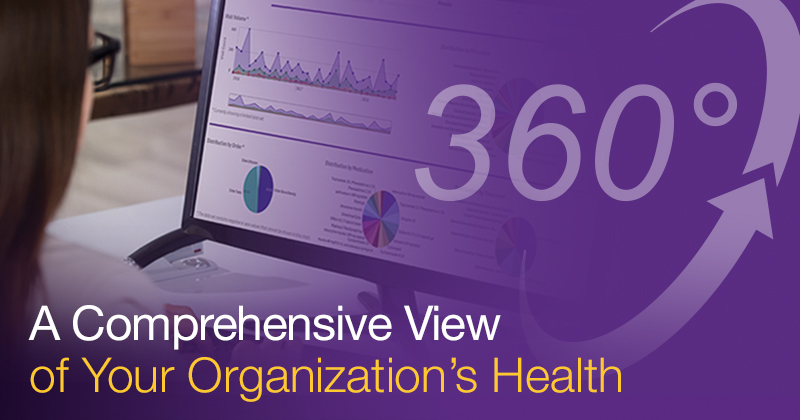
Healthcare analytics are more than just numbers and spreadsheets.
Numbers, numbers and more numbers. As you sift through spreadsheets with data point upon data point, do you ever find yourself asking, “I wish there was a simpler way to break down, visualize, digest, share and decode it all to improve my practice?” If so, then keep reading to find out how you can work to maximize the information you can squeeze out of those numbers and how you can translate it into actionable insights.
In the rest of this post, I will talk about what matters when it comes to analytics captured from your electronic medical record (EMR) system, what you should look for when evaluating an analytics platform, how your EMR system fits into that equation and how we, at Modernizing Medicine®, can help.
The Value You Can Uncover From EMR Analytics
Your EMR system should enable you to harvest your data in multiple ways. Once you jump into the data pool and look at the numbers, having access to such information can assist with patient adherence and follow-up, as well as marketing efforts to a specific group of patients—not to mention providing feedback on patient results. The data captured in your EMR system should function like a search engine helping you work smarter, and not harder.
Focusing on the Right Combination of EMR Data
The more you can drill down into your data, the better. You should be able to filter information to break it down into the right pieces by parameters such as ICD-10 or CPT code, facility, Tax ID, medication plan and the list goes on and on.
Learn About EMR Analytics Report Categories
A front office staff member, a provider and the billing team are all going to have different priorities and questions they want answered when looking at data sets. However, a common theme among all three roles includes the ability to easily analyze data visualizations and answer challenging questions. Administrative staff in the practice may want to know what patients should receive follow-ups, providers may be more focused on tracking outcomes, and the billing team may want to track month-over-month changes in A/R.
Below I outlined some scenarios for the clinical, operational and financial operations and questions posed from various practices throughout the years. Before deciding on what EMR analytics tool to implement, make sure questions like these and others you are often asked can be answered by the data captured. Do you ever find yourself wondering the answers to these questions?
Let’s look at some clinical use cases for data that you may find beneficial.
- We are exploring the option of opening a satellite office, but how do we know the best location?
- How do I evaluate if patients with a history of skin cancer are getting regular skin exams?
- How do I monitor patient portals and see if we are meeting our compliance requirements?
Now, here are some operational use cases for such EMR data.
- How do I view wait times throughout the office to see if changes can be made to improve efficiency?
- Our compensation model is based on performance. How do I know the number of patients each staff member is assisting with?
- To better manage performance, how can I monitor which medical assistants are assisting with a particular procedure?
And finally, here are a couple of financial use cases your healthcare analytics should help you explore.
- How can I view which providers are overriding charges and what they are changing?
- How do I compare my data with benchmarking data to help safeguard against an audit?
You want to make the data work for your needs—whether that is your role in the practice or the medical specialty.
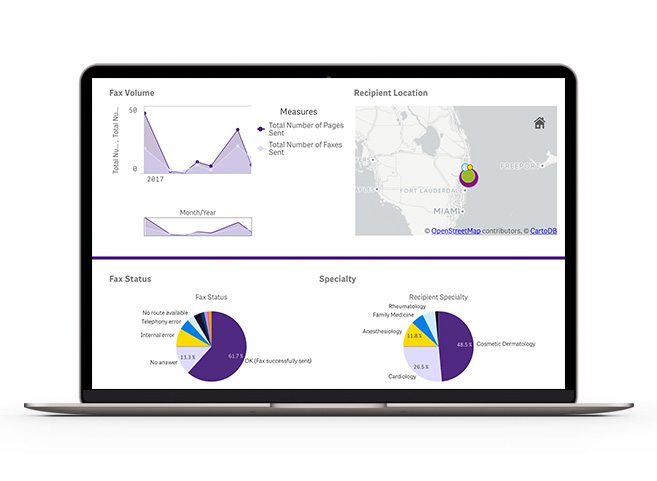
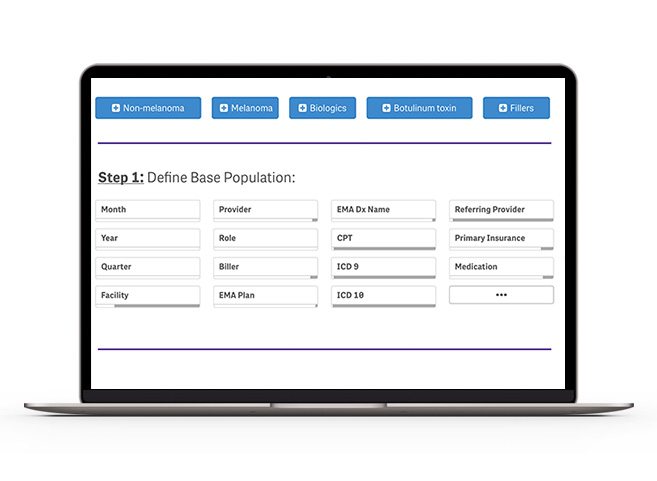
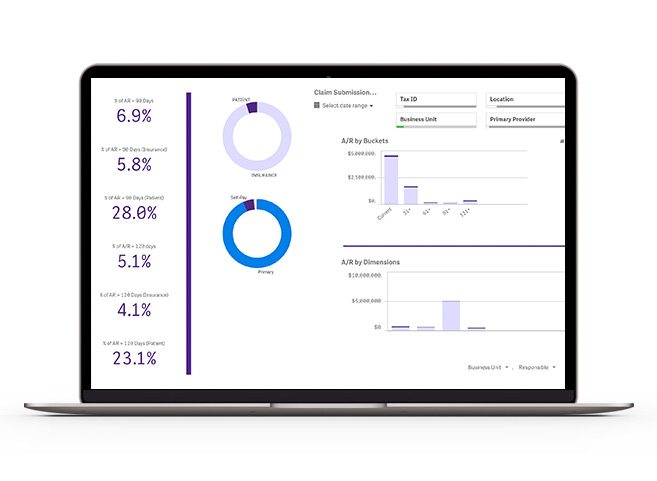
Zeroing in on Specialty-Specific EMR Analytics
Each medical specialty is different, and what matters most to one may not be as relevant to another. A healthcare data analytics platform should answer challenging questions that are of interest to your respective specialty. Let’s take a look at what questions you may want to answer when analyzing and parsing through your data.
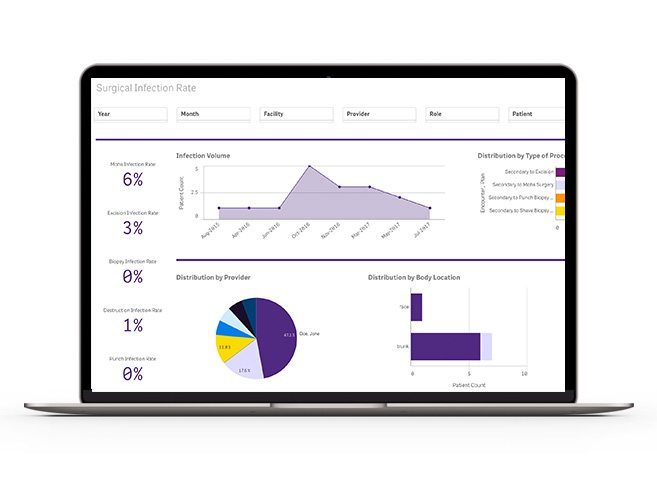 Dermatology EMR Analytics
Dermatology EMR Analytics
- How do I produce a list of patients that came in for Botox, so I can send communication regarding our special promotions?
- How can I evaluate if bringing a particular procedure is profitable?
- What may be causing my surgical infection rate to increase for procedures like biopsies and excisions? And even more importantly, what could I do to address it?
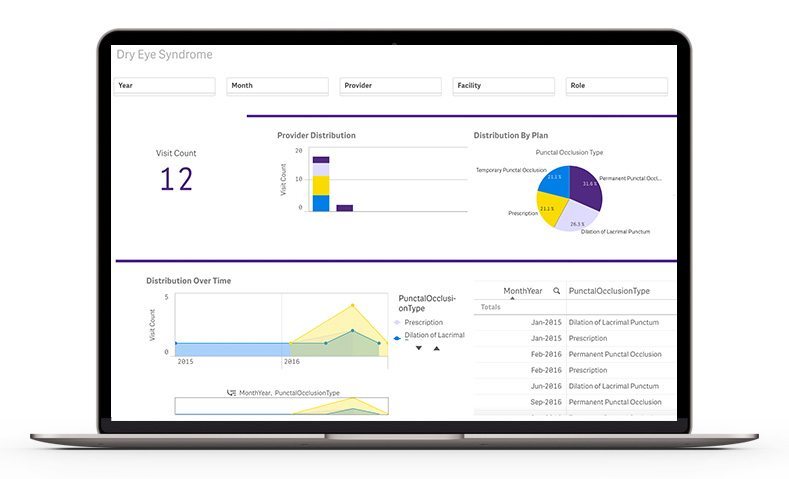 Ophthalmology EMR Analytics
Ophthalmology EMR Analytics
- How can I check to see if my glaucoma patients are returning for their visual fields?
- What is my utilization of one PCIOL lens versus another and what is the surgical outcome?
- How can I view a list of patients that received Lasik evaluations, but did return for the procedure?
Orthopedic EMR Analytics 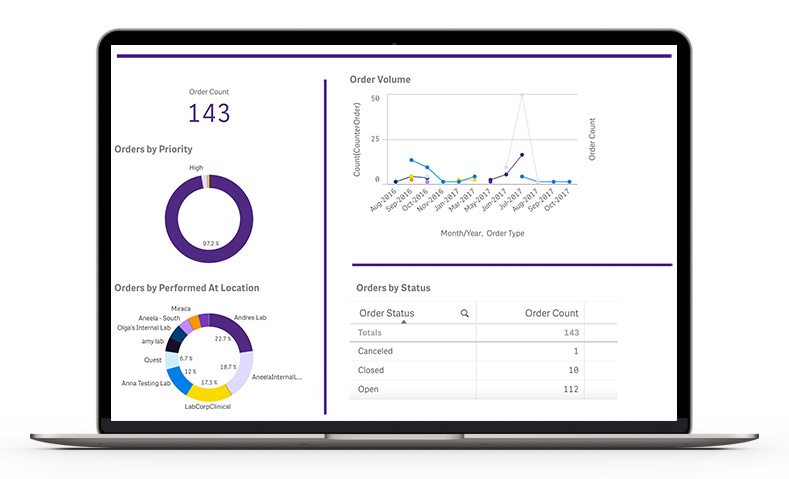
- How many patients have I referred to physical therapy? Should I consider bringing physical therapy in-house?
- How many patients in my orthopedic practice received PRP or viscosupplementation injections?
- How many level 4 new patient visits did I perform this calendar year?
If your EMR system captures structured data, also known as actionable data, answering such questions outlined above should become an easy task. Analyzing your data takes the guesswork out; thus, helping you come up with solutions to help improve overall practice performance. When evaluating both EMR systems and analytics platforms, make sure they have the capability to capture such data and turn it into actionable insights. Working with a single vendor that can provide a one-stop shop for both your EMR and your EMR analytics often proves even more beneficial.
So Where Can Modernizing Medicine Assist When it Comes to EMR Data Analytics?
All that being said, how can we, at Modernizing Medicine, help you when it comes to gaining a 360-degree of your organization’s health? Flexibility is paramount so we provide various data solutions* to meet your practice needs.
- Data Explorer. The Data Explorer solution is a self-service set of reports that allows you to build reports with multiple dimensions and export them for further manipulation and analysis. Data Explorer gives you the flexibility to explore raw data on your own, to answer specific questions. This is currently available to all dermatology clients and is planned for the remaining specialties in Q1 of 2019.
- Data Delivery. The Data Delivery solution provides a monthly download of structured data sets that can allow you to visualize your practice data in your own independent data analytics software or easily share data with third parties, such as academic registries. Beta is planned for Q2 of 2019 for dermatology, general availability for dermatology is planned for Q3 of 2019 and the other specialties are planned for late 2019.
- Analytics Platform. If you’re looking to seriously advance your practice’s performance, you can opt for our full Analytics platform and gain access to a more extensive set of data that includes a wide array of prepared dashboards. This platform offers benchmarking data that allows you to compare your practice with national CMS data. Our Analytics platform digs deeper into providers’ choices, behaviors and outcomes to help you identify opportunities for quality and cost improvement. This offering is currently available for all current clients.
*Additional fees may apply.





